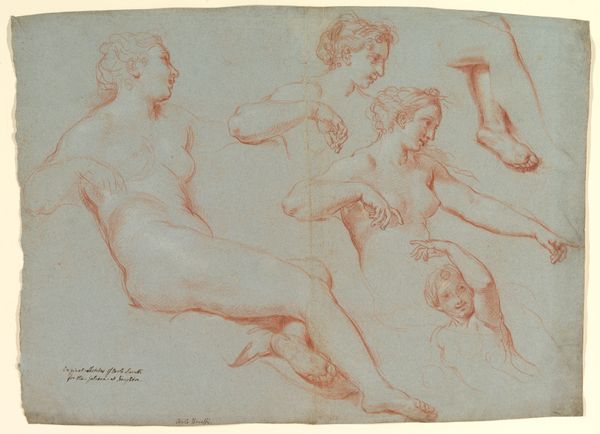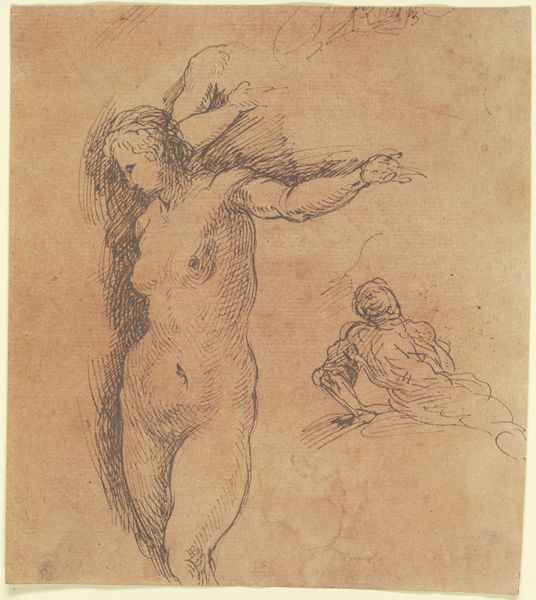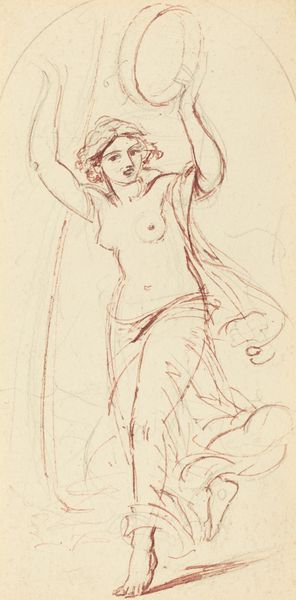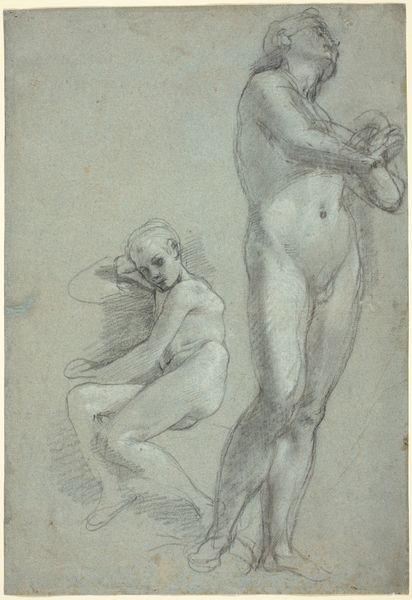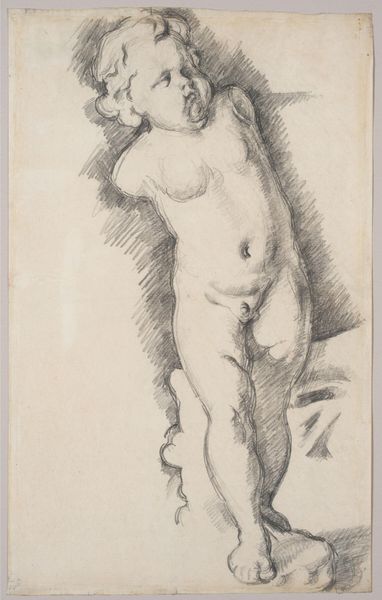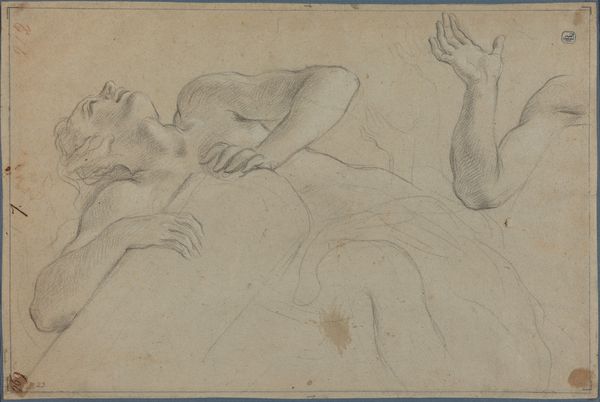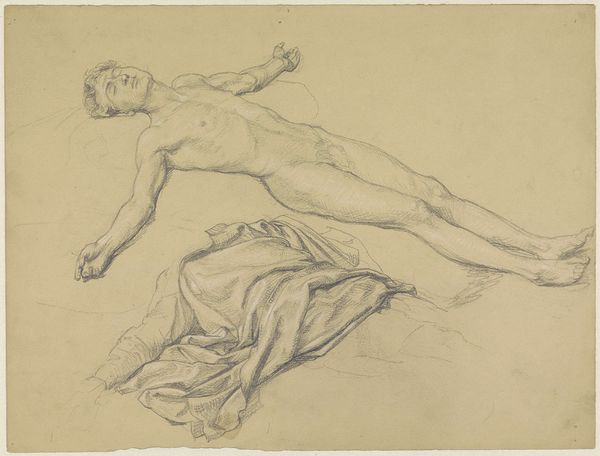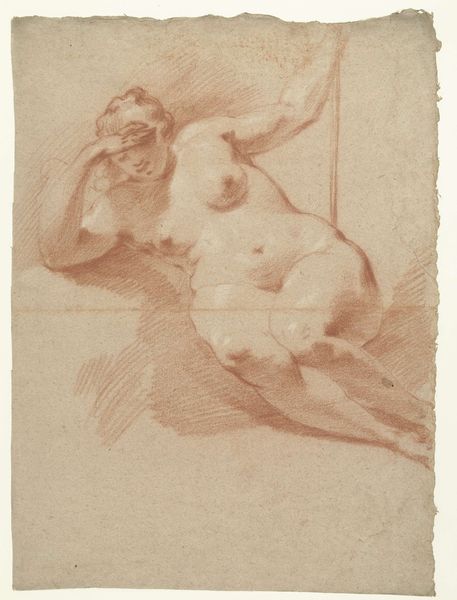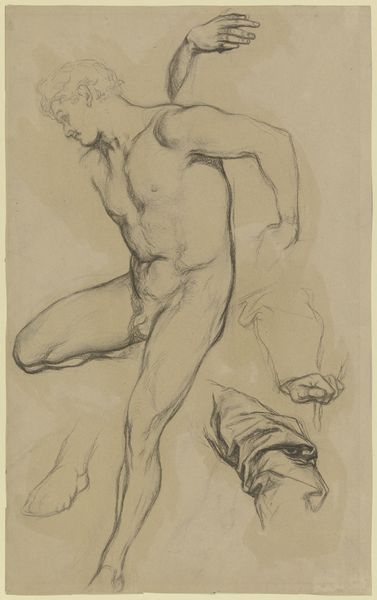
Studies for the Figure of a Centaur and a Nymph 1708 - 1717
0:00
0:00
drawing, print, pencil
#
drawing
#
baroque
# print
#
pencil sketch
#
figuration
#
pencil
#
pencil work
#
history-painting
Dimensions: 14-15/16 x 12-5/16 in. (38.0 x 31.2 cm)
Copyright: Public Domain
Editor: So, this drawing is titled *Studies for the Figure of a Centaur and a Nymph* by Francesco Trevisani, created sometime between 1708 and 1717. It’s rendered in pencil. It’s at the Met. It has a wistful, classical feel. What stands out to you? Curator: The fragmented figures, especially the centaur, immediately recall the potent symbolism embedded in classical mythology and its revival during the Baroque. Do you recognize any recurring symbolic themes? Editor: I see the centaur and a nymph… that says something about nature, maybe chaos versus order? Curator: Precisely! The centaur, a creature of duality – human intellect and animal instinct – often symbolizes untamed nature and earthly passions. The nymph, typically associated with springs and groves, embodies feminine grace, beauty, and harmony. Consider their poses and expressions: What narrative might Trevisani be hinting at? Editor: They look like they're reacting to something! It seems charged with emotion. Is this linked to morality in some way? Curator: It is likely connected, given the historical context and enduring iconography associated with these figures. Baroque art frequently uses mythological subjects to explore human conditions or moral allegories. How might Trevisani be employing the centaur-nymph dynamic to address contemporary values? Editor: Perhaps this speaks to the struggle between reason and primal instinct. Trevisani could be reflecting on an individual’s internal struggle. Or societal anxieties… Curator: Wonderful observation. Think about how the visual symbols of mythology have remained meaningful across centuries. Does recognizing this cultural memory enhance your appreciation of the work? Editor: Definitely. Seeing beyond just figures to layers of cultural significance, it's really impactful. It encourages you to imagine endless potential narratives behind these drawings. Curator: Yes! Once you begin to recognize visual symbolism, it deepens your understanding of our cultural history and humanity's enduring hopes, fears, and ideals.
Comments
No comments
Be the first to comment and join the conversation on the ultimate creative platform.

